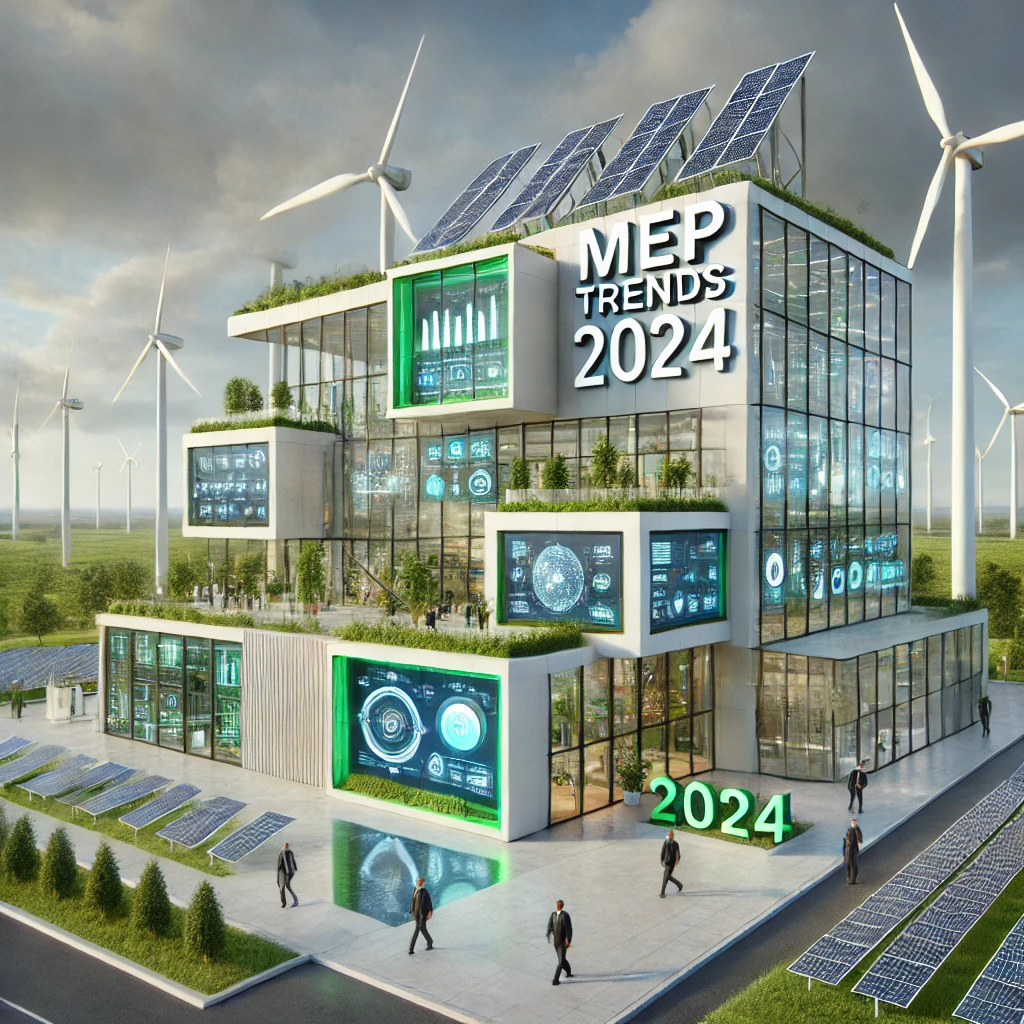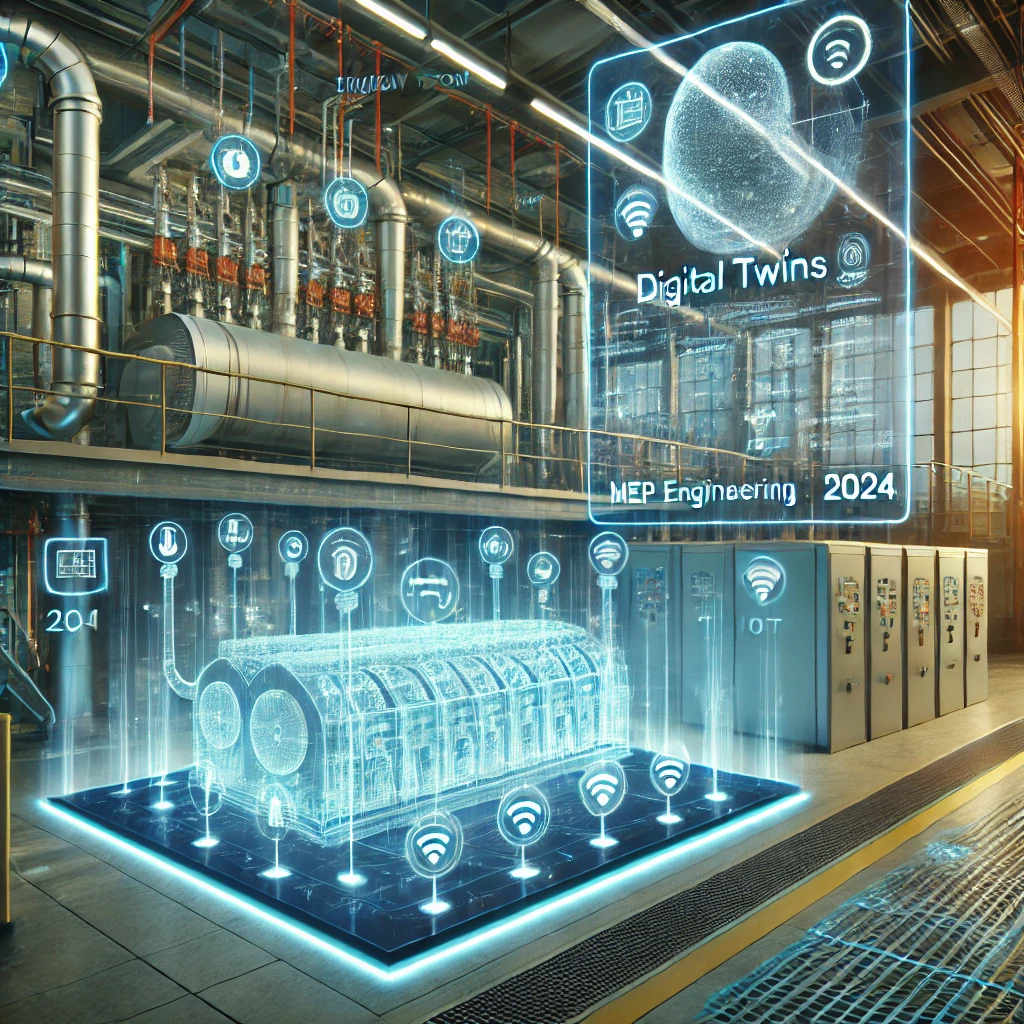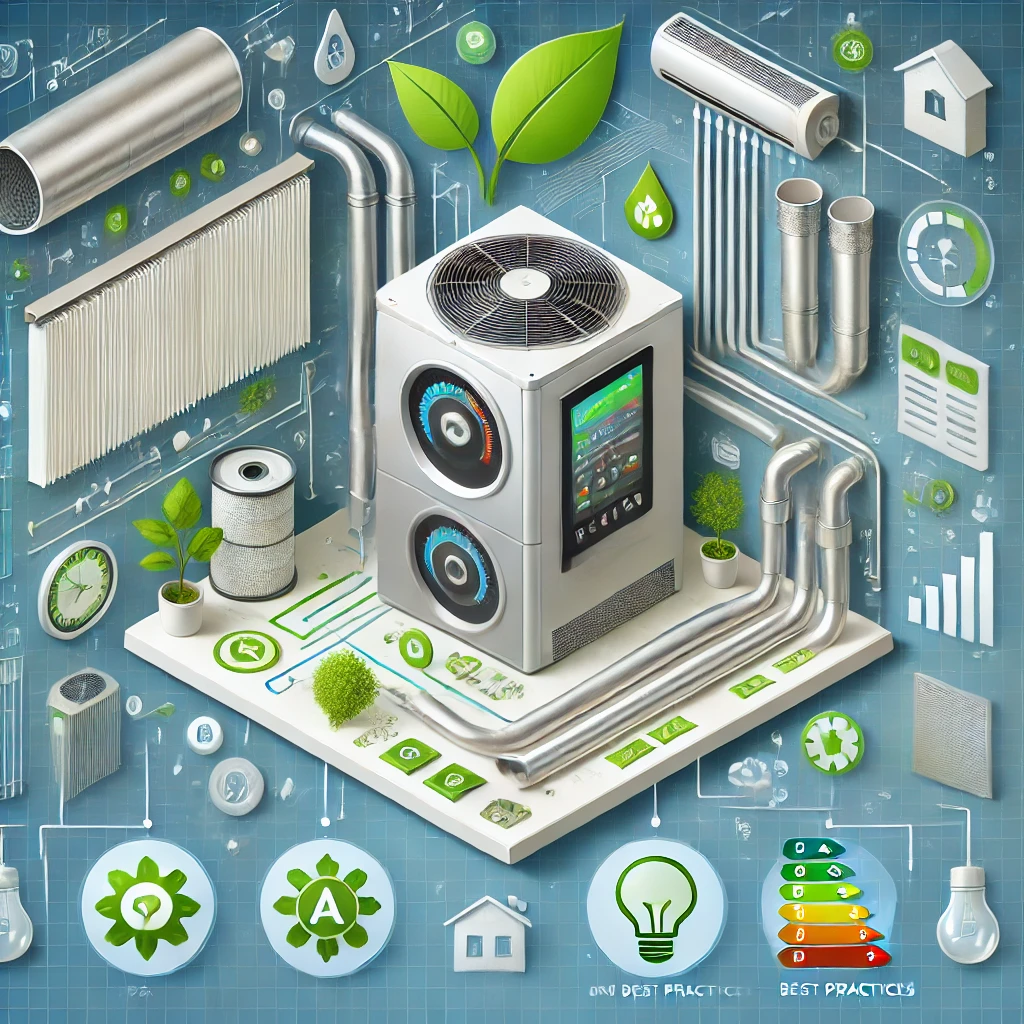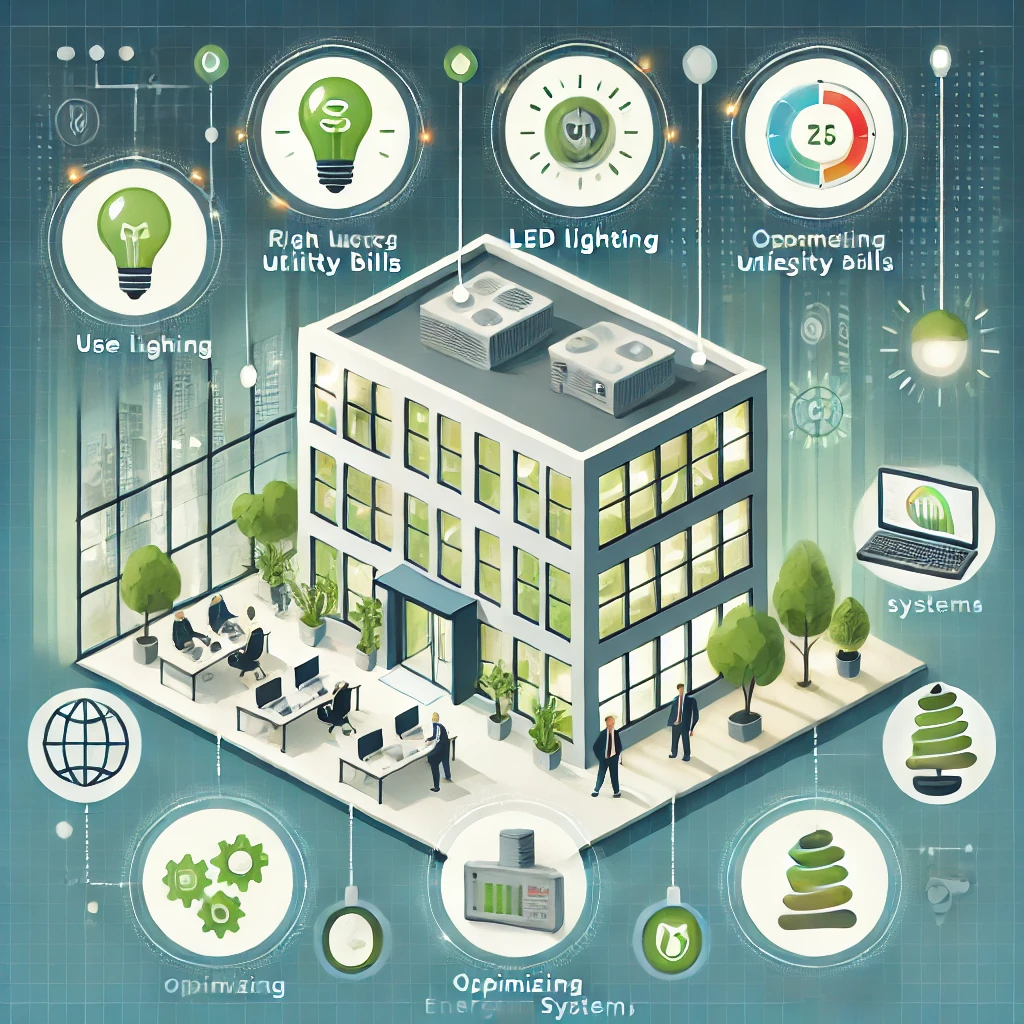Top Trends in MEP Engineering
for 2024

As 2024 unfolds, the world of Mechanical, Electrical, and Plumbing (MEP) engineering is evolving rapidly, driven by advancements in technology, sustainability goals, and the increasing complexity of building systems. These trends are shaping how buildings are designed, constructed, and operated. Below, we explore the top trends in MEP engineering for 2024, with a focus on innovation, sustainability, and the integration of smart technologies.
Sustainability and Green Building Solutions
Sustainability continues to be a dominant trend in MEP engineering. With stricter environmental regulations and a growing global awareness of climate change, the demand for energy-efficient, low-emission building systems is surging.
- Net-Zero and Energy-Positive Buildings: Net-zero energy buildings, which produce as much energy as they consume, are becoming the industry standard. The next evolution is energy-positive buildings, which generate excess energy to feed back into the grid. MEP engineers are critical in designing systems that integrate renewable energy sources like solar panels, wind turbines, and geothermal systems to achieve these goals.
- Efficient HVAC Systems: HVAC (Heating, Ventilation, and Air Conditioning) systems are often one of the largest energy consumers in a building. Engineers are now focusing on high-efficiency HVAC systems, smart controls, and heat recovery systems to reduce energy consumption and improve indoor air quality.
- Sustainable Materials: The use of sustainable materials in MEP systems is gaining popularity. Engineers are opting for materials with lower environmental impacts, such as low-VOC (volatile organic compounds) adhesives and insulation, recyclable ductwork, and more durable piping systems.
Building Information Modeling (BIM) and Digital Twins
BIM has become a cornerstone of modern construction, and its role in MEP engineering is only expanding. In 2024, the integration of BIM with advanced technologies like digital twins is setting new standards for project execution and building management.
- BIM for Coordination and Collaboration: BIM allows MEP engineers to create detailed, three-dimensional models of their systems, enabling precise coordination with architects, structural engineers, and contractors. This helps reduce design conflicts and construction errors, improving project timelines and reducing costs.
- Digital Twins: Digital twins—virtual replicas of physical systems—are becoming increasingly important in MEP engineering. They enable real-time monitoring and predictive maintenance by collecting data from sensors embedded in the building’s systems. Digital twins can help optimize energy usage, improve equipment performance, and forecast maintenance needs, reducing downtime and operational costs.
Smart Buildings and IoT Integration
Smart buildings, powered by the Internet of Things (IoT), are rapidly becoming the norm. These buildings use connected devices and automation systems to enhance efficiency, comfort, and safety, and MEP engineering plays a central role in their design and operation.
- Smart HVAC Systems: HVAC systems are being integrated with IoT-enabled sensors and controls that can adjust temperature, humidity, and ventilation in real-time based on occupancy and outdoor conditions. This reduces energy consumption and improves indoor air quality.
- Lighting and Power Management: IoT is also being used to control lighting and electrical systems. Smart lighting solutions can automatically adjust based on natural light levels and occupancy, while smart meters and energy management systems monitor and optimize electrical usage.
- Predictive Maintenance: IoT sensors embedded in MEP systems can monitor equipment performance and detect anomalies before they lead to breakdowns. This allows for predictive maintenance, reducing downtime and extending the lifespan of critical equipment.

Decarbonization and Electrification
In line with global efforts to reduce carbon emissions, MEP engineering is focusing on decarbonization and the transition from fossil fuels to electric power.
- Electrification of Heating Systems: Traditional heating systems that rely on gas or oil are being replaced by electric alternatives, such as heat pumps, which are more efficient and have a lower carbon footprint. Engineers are also exploring hybrid systems that combine electric and renewable energy sources to further reduce emissions.
- Low-Carbon and Carbon-Neutral Solutions: Beyond electrification, MEP engineers are integrating carbon capture technologies and designing systems that use alternative, low-carbon fuels like hydrogen. There is also a push toward carbon-neutral building operations, where energy consumption is offset by renewable energy production or carbon credits
Modular and Prefabricated MEP Systems
The construction industry is embracing modular and prefabricated solutions, and MEP engineering is following suit. Prefabricated MEP systems offer numerous benefits, including reduced construction timelines, improved quality control, and reduced waste.
- Off-Site Fabrication: More MEP components are being prefabricated off-site in controlled environments, allowing for faster installation and minimizing on-site labor. This trend is particularly advantageous in large-scale commercial and residential projects, where tight schedules and high demands for precision are common.
- Modular MEP Design: Modular MEP designs allow for systems to be easily scaled up or down and installed with minimal disruption. This is especially useful in healthcare, education, and data center projects, where flexibility and adaptability are key.
Advanced Energy Storage Solutions
As renewable energy sources like solar and wind become more prevalent in building design, energy storage systems are increasingly important for managing supply and demand. MEP engineers are now focusing on integrating advanced energy storage technologies into building systems.
- Battery Storage Integration: Battery energy storage systems (BESS) allow buildings to store excess energy generated by renewable sources and use it during peak demand times. This not only enhances energy efficiency but also reduces reliance on the grid and lowers operational costs.
- Thermal Energy Storage: Engineers are also exploring thermal energy storage systems, which store excess heat or coolness for later use in HVAC systems. These systems can reduce the strain on energy infrastructure during peak times and help balance supply and demand.
Health and Wellness-Focused MEP Design
Post-pandemic, there has been an increased focus on the health and wellness of building occupants. MEP engineers are developing systems that prioritize air quality, ventilation, and water quality to promote healthier indoor environments.
- Enhanced Ventilation Systems: Engineers are designing HVAC systems with enhanced filtration, air purification technologies, and higher ventilation rates to improve indoor air quality and reduce the spread of airborne contaminants.
- Water Quality Monitoring: Plumbing systems now integrate advanced water quality monitoring to ensure clean and safe water for occupants. This is particularly important in healthcare, hospitality, and educational facilities, where water quality is directly tied to health outcomes.
Conclusion
In 2024, MEP engineering is set to embrace new technologies and design methodologies that prioritize sustainability, efficiency, and occupant well-being. From smart buildings and renewable energy integration to modular construction and decarbonization, the future of MEP engineering is evolving toward a more innovative, sustainable, and connected industry. MEP engineers will continue to play a crucial role in shaping the buildings of tomorrow, ensuring they are more energy-efficient, resilient, and comfortable for their occupants.
Category:



